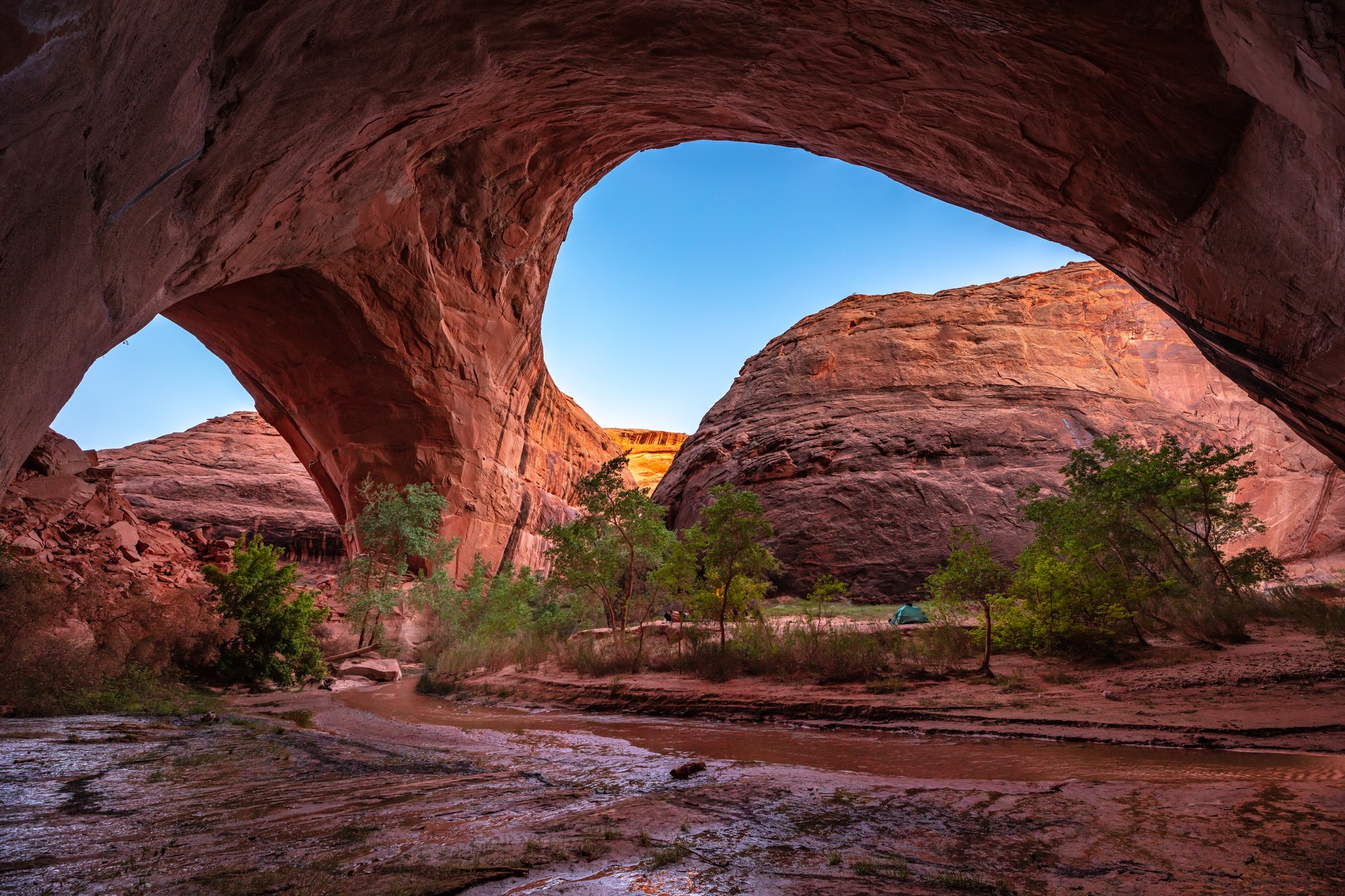The Daily Escape:

Coyote Gulch, Escalante, UT – May 2023 photo by Chirag A. Patel
Wrongo and Ms. Right watched the Knicks vs. Miami and Ted Lasso rather than dipping into the political rally for Trump held by CNN. But other news outlets reported on it. Apparently, the live audience gave him a standing ovation as he entered the set. They laughed when he called E. Jean Carroll “a whack job” and belittled her claim of sexual assault:

Trump suggested that the US should default on its debt if Biden didn’t agree to the cuts that House Republicans want. He pledged to pardon many of those convicted in the Jan. 6 attempted coup. He refused to back Ukraine in its war against Russia.
For those who think that there’s an opening in 2024 among GOP partisans to either vote for someone other than Trump or gasp!, vote for a Democrat, you are sadly mistaken.
A big part of the press (obviously including CNN) just can’t bring itself to admit the truth about the current state of the Republican Party. And they don’t really see it as their job to engage in such denunciations, even to protect the nation.
America is chockfuckingfull of Republicans who are, as Hillary said, “deplorables”. And they’re not all in New Hampshire. It’s way past time for the press to acknowledge this sad fact.
But today, let’s talk about the US energy grid. Our transition from fossil fuels to a green energy future will require a huge investment in our current electric grid. This probably means we’ve understated the costs of America’s energy transition. From Haley Zaremba, at OilPrice: (emphasis by Wrongo)
“In order to keep up with the expansion of renewable energy production capacity, the United States will have to more than double the current size of the electric grid. Stimulus from both the public and private sectors are hitting their intended mark, and the clean energy sector is booming. However, much of the potential environmental benefits of electrification will be completely wasted if we don’t have the power lines and grid capacity to transmit that power from where it’s being produced to where the demand is concentrated.”
Zaremba quotes McKinsey, who say that building sufficient wind and solar farms to power the clean energy transition will require overcoming three major hurdles: Finding enough land at an affordable price, building up the power grid to support the influx of electricity, and fixing the archaic and inefficient permitting process that governs these processes.
America needs massive investment in our national energy simply to stand still, regardless of the source of electricity.
But it’s important to identify today the key energy sources of the future because that determines how we specify and build the upgraded grid. A grid based on renewable sources requires a denser network and more long distance direct current lines, while conventional grids need a relatively small number of very high capacity short distance alternating current lines (i.e. from a cluster of small modular nuclear reactors (SMRs) to the nearest city).
Either option is expensive and each brings its own set of regulatory issues. Zaremba notes that:
“Building power lines alone is an enormous bureaucratic hurdle that can take years to gain approval. The average review of renewable energy projects takes about 3.5 years, but there are cases in which a single transition line took over a decade to be completed…”
According to the US DOE, the country will need 47,300 gigawatt-miles of new power lines by 2035. That represents a 57% expansion of the existing grid. And the real issue is the glacial pace of the bureaucratic review processes which underlie permitting and oversight of clean energy projects as well as grid expansion.
Zaremba closes with:
“Fixing the presently nightmarish permitting and approval system will be integral to decarbonizing the US economy…and making sure that the efforts already underway to decarbonize the nation’s energy mix are not squandered. It’s great that wind and solar capacity are being added at a record-breaking rate, but it’s all a waste if, once completed, there’s no permit allowing them to plug into the grid – or if there’s no grid at all.”
As if on cue, on Wednesday Biden signed on to Sen. Manchin’s (D-WVA) plan to speed the approval of some fossil fuel projects and to hasten the construction of new transmission lines. The NYT quotes John Podesta, Biden’s senior adviser for clean energy innovation:
“Right now, the permitting process for clean energy infrastructure, including transmission, is plagued by delays and bottlenecks…”
Manchin’s bill has some holding their noses because it is so pro-fossil fuel. But should it become law, perhaps the US government will be able to speed up approval for at least some of the green energy projects.
In summary, there’s lots to do and no sure way to get it all done.
